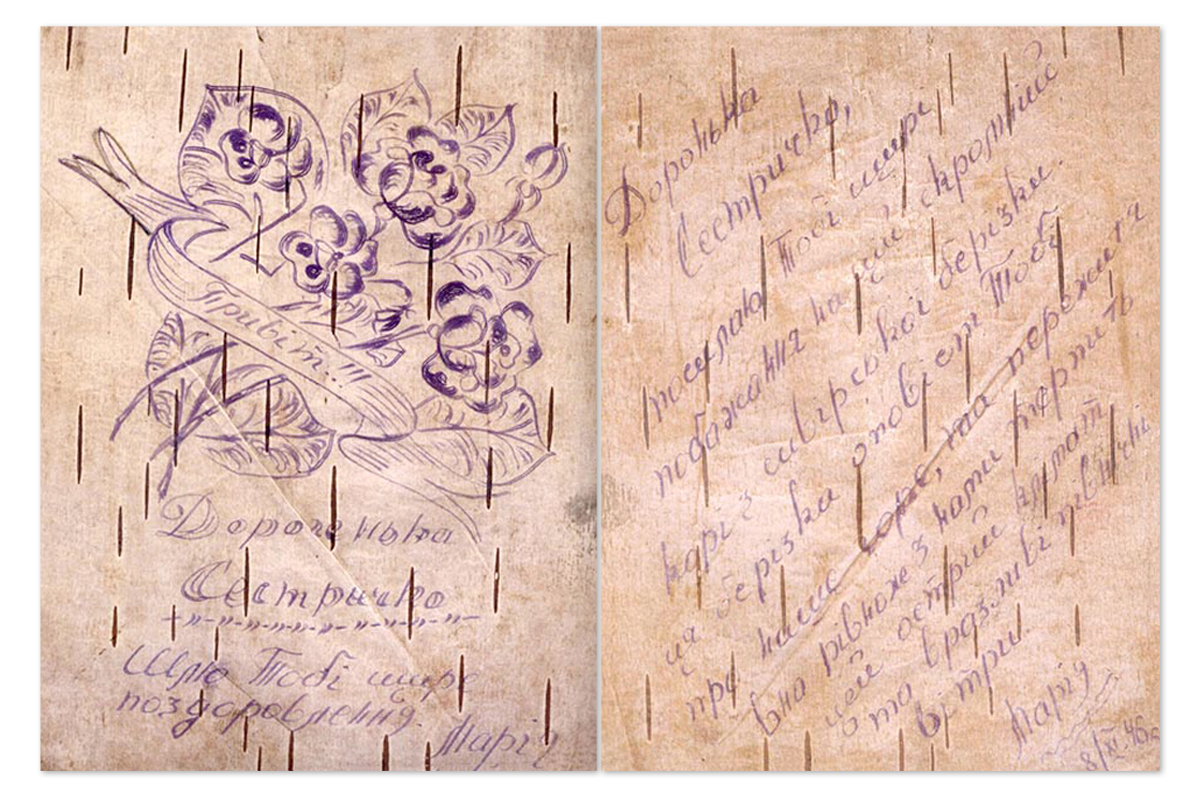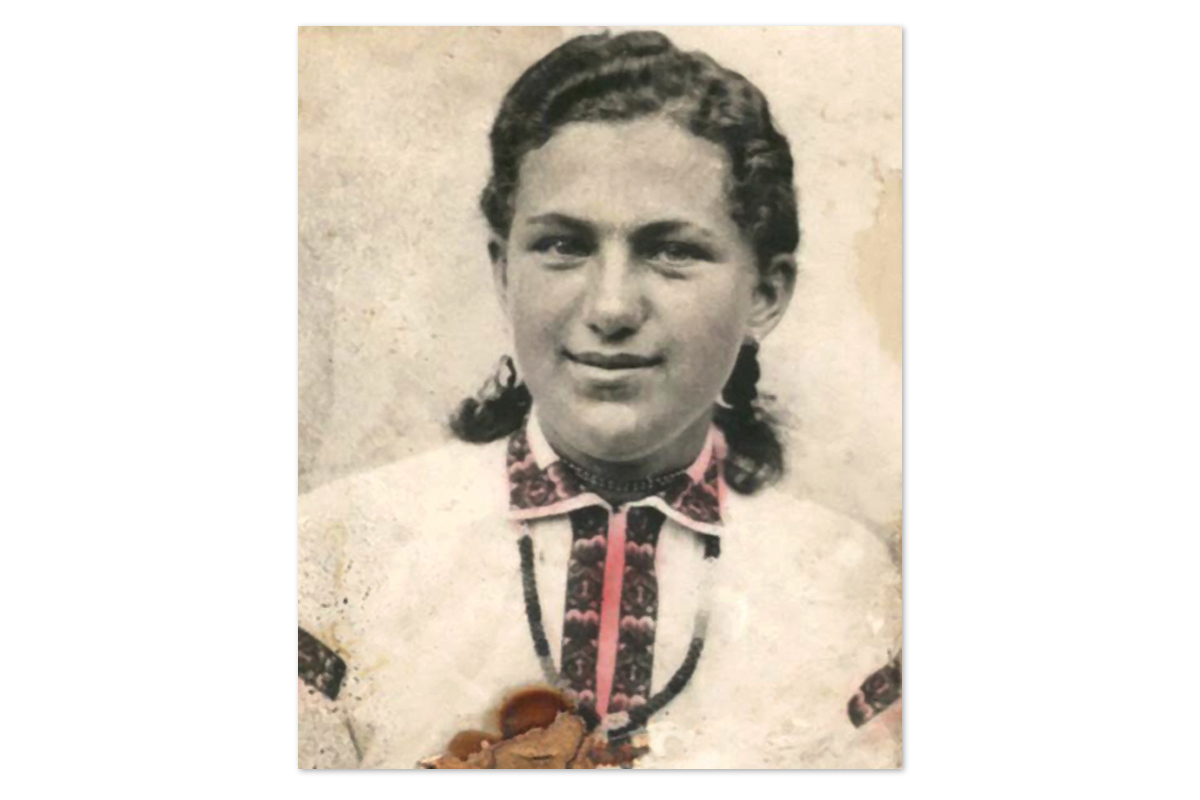During a time of fateful trials, when Moscow, filled with imperial contempt, once again denied Ukrainians the right to choose their own civilizational path, the museum’s archival collection was enriched with a significant relic for understanding our national history—a letter written on many thin layers of birch bark tightly bound together. Its author, Maria Humeniuk, was born in 1926 in the village of Yavoriv, in what was then Stanislav region (now Ivano-Frankivsk region). She was a highly gifted individual, skilled in drawing, singing, playing various musical instruments, and participated in the local "Prosvita" society’s drama club. At the age of 18, she joined the Organization of Ukrainian Nationalists (OUN) and took the pseudonym "Kalyna," symbolizing youthful beauty, tenderness, and virtue.
In the ranks of the OUN, she met her love. However, her happiness was short-lived. Her beloved, Ivan Shkondeyuk, was killed in a shootout with an NKVD operation group. When the officers dragged his lifeless body by rope, Maria involuntarily exclaimed, "Murderers!" She was immediately arrested. During interrogations that lasted for six months, she confessed to being a member of the OUN. On May 18, 1946, she was sentenced to 10 years of imprisonment.
Her places of forced confinement were the gray-black cold barracks of the Gulag labor camps in the towns of Inta and Norilsk, Russia. She worked in a brigade that drained the swampy areas around the camp, as well as in auxiliary construction work. Throughout her imprisonment, Maria corresponded with her older sister, Paraska. One day, Paraska received two unusual letters that Maria had written on birchbark: "Dear sister! I send you sincere wishes on this humble bark from a Siberian birch. This birch will tell you about our sorrow and suffering. It too, like us, endures this harsh climate and the biting northern winds."
The sister’s heart often ached for Maria, knowing the difficult conditions she was enduring and how hard it was to prepare the birchbark. As a result, she placed the letters in a glass jar and hid them in the barn, among the hay, thus saving these extremely rare items during a search by the state security officers.
Maria Humeniuk did not have the chance to return to Ukraine to her homeland. She died on November 13, 1950, from pneumonia and was buried in a camp cemetery on the outskirts of Norilsk. She was posthumously rehabilitated on February 20, 1992. (One letter remains in the family archive).
A special mention should be made of the person who handed us this unique relic—Maria’s relative, the well-known researcher of the Ukrainian liberation movement of the mid-20th century, the first discoverer and chief curator of the "Yavoriv UPA Photo Archive," a connoisseur of the collection of photos of the Black Forest insurgents (Ivano-Frankivsk region) by Dmytro Shovhenyuk, philanthropist, and dear friend of the Museum, Vasyl Humeniuk.

